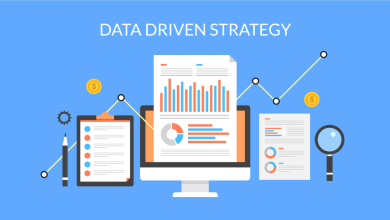
The main risks of AI adoption in business include privacy concerns related to data misuse, algorithmic bias leading to discrimination and reputational damage, technological unemployment resulting from job displacement, lack of transparency in decision-making processes, and the potential for market monopolies dominated by tech giants. Understanding these risks is crucial for developing effective risk management strategies and ensuring ethical AI deployment.
Various Risks of AI Adoption
One of the most pressing concerns when integrating AI into business operations is operational risks. These arise when AI systems are implemented without a solid understanding of existing workflows, potentially disrupting processes altogether.
When organizations deploy AI technologies haphazardly, they might experience unforeseen challenges such as incorrect task prioritization or even system outages. For example, an AI tool designed for inventory management that malfunctions can lead to overstocking goods or running out of essential items entirely—both situations significantly impacting revenue and customer satisfaction.
In addition to operational hazards, financial risks present another layer of complexity. The costs associated with purchasing and integrating AI technologies can mount quickly. Not only are there initial investment costs, but businesses must also consider expenses related to maintenance, updates, and potential adjustments over time.
For instance, if an organization invests heavily in a chatbot system that ultimately fails to meet user needs or experiences performance issues, it may incur substantial financial losses—not just from the investment itself but also due to lost revenue from ineffective customer interactions.
As organizations increasingly rely on AI systems, they must also grapple with data accuracy risks. A machine learning algorithm is only as good as the data it’s trained on; incomplete or inaccurate data can introduce significant errors into decision-making processes.
Picture a financial institution utilizing AI to assess loan applicants based solely on historical data. If the data reflects biased lending practices from the past, it could inadvertently reinforce those biases in current evaluations, leading to discrimination against certain demographics.

Balancing Benefits and Risks
While AI undoubtedly boosts operational efficiency and provides insights that enhance decision-making capabilities, it’s essential to balance these benefits with an understanding of potential pitfalls. A survey by McKinsey indicated that while companies implementing AI reported an ROI increase of 10%, over 40% faced significant operational risks during integration. This highlights that technology should be embraced not with blind enthusiasm but through careful consideration and strategic planning.
Ethical Challenges
One of the pressing ethical dilemmas in AI adoption lies in its tendency to function like a black box. This term refers to systems that operate in obscurity, where decisions are based on extensive datasets without clear insight into how those outcomes are determined. When an AI model processes vast amounts of information to generate results, it leaves stakeholders grappling with questions rather than answers. Without a transparent glimpse into these inner workings, users often find themselves at a loss, which leads to frustration and distrust.
Issue of Transparency
The absence of transparency is not merely an inconvenience; it can pose severe implications for decision-making. In countless scenarios, stakeholders may be unable to comprehend or contest the results produced by AI-driven systems.
Take, for example, a bank utilizing an automated system to evaluate loan applications. If a customer’s application is declined, that person may receive no substantial context for the rejection, making it nearly impossible to challenge the decision or rectify potential errors. Such experiences can alienate customers and breed skepticism towards the institution’s practices.
Consider the case from 2023, when a well-known tech company faced significant backlash over its AI recruitment tool. Reports surfaced indicating that the system demonstrated bias against female candidates while favoring male applicants for the same roles. This fallout stemmed primarily from the opaque nature of the algorithm used—many critics argued that if transparency had been prioritized during development phases, potential biases could have been identified and eliminated early on.
Data Privacy Concerns
Data privacy is not just a buzzword but one of the most pressing issues accompanying AI adoption today. When businesses choose to implement AI systems, they often find themselves needing access to vast amounts of personal data. This can be anything from customer email addresses to financial information or browsing habits. The sheer volume of data required can put companies in murky waters, raising concerns about misuse and unauthorized access.
Consequently, this situation creates a strong imperative for regulatory compliance. Navigating through regulations like the General Data Protection Regulation (GDPR) is vital yet complex. Businesses must ensure they are not only collecting data ethically but also handling it responsibly. Here lies the challenge: maintaining compliance demands significant resources, specialized knowledge, and commitment to ongoing monitoring and reassessment as regulations evolve.
The crux of the matter is that with high volumes of concentrated data comes the heightened risk of breaches. Cybersecurity threats are ever-present, and a single breach can have catastrophic consequences—not just financially but also for reputation and trustworthiness among customers. Businesses could face lawsuits or regulatory action if their customers’ sensitive data falls into the wrong hands.
Case Study: Facebook-Cambridge Analytica
A notable illustration of this happened during the Facebook-Cambridge Analytica scandal. Here, sensitive user data was misused without consent, casting a spotlight on how vulnerable personal information can be when mishandled. The fallout highlighted an urgent need for stringent data privacy measures within organizations aiming to utilize AI technologies responsibly.
Impact on Workforce and Jobs
AI adoption is transforming the landscape of work by automating tasks that have traditionally required human intervention. Take customer service as an example; a study conducted in 2024 found that 70% of customer service jobs in retail could be automated using AI technologies. This startling statistic suggests that many routine roles could gradually disappear, leading to significant shifts within industries reliant on human labor. While automation enhances productivity, it cultivates a climate of anxiety regarding job security.
With the looming threat of job loss, projections indicate that by 2030, around 92 million jobs will be displaced due to technological changes. However, this disruption has a contrasting effect. The same surge in automation and AI-driven processes might lead to the creation of 170 million new jobs, resulting in a net increase of 78 million jobs overall. While some positions may vanish, new roles requiring different skill sets are likely to emerge, fostering a dynamic shift in employment opportunities.
Upskilling as a Solution
Addressing these changes requires a proactive approach: organizations must invest in upskilling their workforce to equip employees for new challenges posed by AI advancements. This isn’t merely about training; it’s about transforming career trajectories and enabling individuals to pivot toward emerging roles. For instance, companies like AT&T have launched extensive retraining programs aimed at helping staff transition smoothly into positions less susceptible to automation.
The challenges don’t end there; implementing these transformations takes effort and resources from all stakeholders in the workforce ecosystem. As we explore the intricacies connected with necessity and risk, it’s vital to recognize that navigating change also involves confronting technological hurdles that may emerge alongside AI adoption.
Cybersecurity Threats
With rapidly evolving technologies, the threat landscape has shifted dramatically. Cybercriminals armed with AI tools can conduct more effective phishing campaigns, targeting unsuspecting employees who may fall victim to personalized scams made possible through deepfakes or social engineering techniques. Reports indicate that phishing attempts have surged alongside AI adoption, making it crucial for organizations to enhance their cybersecurity training as well as deploy advanced detection systems.
Turning our focus from cyber threats, it’s also essential to consider the implications of autonomous system failures.
Autonomous System Failures
In cases of autonomous AI systems, failure isn’t merely inconvenient; it can lead to disastrous consequences. Consider the case in 2024 where an autonomous vehicle malfunction caused a severe traffic accident, highlighting the need for critical safety measures embedded in these technologies. Companies investing in AI-driven vehicles or machinery must prioritize rigorous testing and approval processes to ensure their systems operate safely under various conditions. There’s no room for shortcuts here; each component of an autonomous system should be thoroughly evaluated before deployment.
Therefore, stress-testing and continuous monitoring become crucial aspects of maintaining AI systems securely.
To navigate these complexities efficiently, businesses can leverage professional expertise by consulting with AI specialists like those at Dan O’Donnell AI Consulting. Employing experts ensures that companies are taking proactive steps toward securing their environments against emerging threats while navigating the intricate legal and ethical considerations surrounding AI deployment.
Understanding the challenges and consequences associated with AI adoption is essential for any business looking to thrive in today’s technology-driven landscape. Prioritizing security and safety will ultimately bolster both operational efficiency and customer confidence.
What regulatory considerations should businesses be aware of when adopting AI technologies?
Businesses adopting AI technologies must navigate a complex landscape of regulatory considerations, including data privacy laws like GDPR and CCPA, ethical guidelines for AI usage, and industry-specific regulations. For instance, studies indicate that 79% of companies report challenges in complying with data protection regulations when implementing AI solutions. Additionally, firms must be prepared to address biases in AI algorithms, as failure to do so can lead to legal repercussions and reputational damage—a necessity emphasized by the growing trend of regulators globally seeking accountability in AI deployments.
How can companies mitigate the risk of job displacement due to increased automation from AI?
Companies can mitigate the risk of job displacement due to increased automation from AI by investing in retraining and upskilling programs for their workforce. By focusing on enhancing employees’ skills to work alongside AI technologies, businesses can facilitate a smoother transition and ensure job security. According to a 2021 McKinsey report, organizations that actively invested in reskilling could reduce potential job losses by up to 25%, while also fostering innovation and increasing productivity within their teams. This proactive approach not only addresses job displacement concerns but also positions companies competitively in an evolving market.
What steps can businesses take to address biases present in AI algorithms?
Businesses can address biases in AI algorithms by implementing diverse data collection practices, regularly auditing algorithms for discriminatory outcomes, and involving multidisciplinary teams in the development process. A study by McKinsey found that companies with diverse teams are 35% more likely to have above-average profitability, showcasing the importance of varied perspectives in minimizing bias. Furthermore, establishing clear guidelines for ethical AI use, coupled with ongoing training for staff on recognizing and mitigating bias, is essential for fostering a more equitable AI landscape.
In what ways can the integration of AI into existing operations create unforeseen challenges?
The integration of AI into existing operations can create unforeseen challenges such as data privacy issues, resistance from employees fearing job displacement, and unexpected biases in algorithmic decision-making. For example, a survey by PwC found that 45% of executives cited workforce concerns as a significant barrier to AI adoption. Additionally, if not properly managed, AI systems may fail to address nuances in human behavior, leading to decisions that inadvertently discriminate against certain groups; a study revealed that 78% of hiring algorithms showed bias against women for specific roles. These challenges highlight the need for careful planning and ethical oversight when implementing AI technologies.
What specific data privacy issues arise when businesses implement AI solutions?
Implementing AI solutions in businesses can lead to significant data privacy issues, primarily due to the extensive collection and processing of personal data. For instance, a study by the International Association of Privacy Professionals (IAPP) found that 79% of consumers express concerns about how their data is used by AI systems. Numerous organizations face risks of data breaches and unauthorized access, as AI systems often require large datasets that may include sensitive information. Additionally, potential biases in algorithms can perpetuate discrimination if not properly managed, leading to both ethical dilemmas and legal implications surrounding violations of data protection regulations, such as GDPR.




